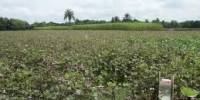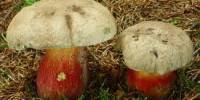1.1. Rationale and objective of the work
In the plant kingdom there is a remedy for every disease (Farnsworth et al., 1985). Two hundred and fifty years ago, there were few or no synthetic medicines. The plants were the main source of drugs for the world’s population. Today, 75% of the world’s population, the poor 3/4ths, still relies on those plants and other tools of traditional medicine (Duke, 1990). Plants have provided a source of inspiration for novel drug compounds, as plant derived medicines have made large contributions to human health and well-being (Nelson 1982).
The number of higher plant species (angiosperms and gymnosperms) on this planet is estimated at 250,000 (Ayensu, 1978), with a lower level at 215,000 (Cronquist, 1981; Cronquist, 1988) and an upper level as high as 500,000 (Tippo, 1977; Schultes, 1972). Of these, only about 6% have been screened for biologic activity, and a reported 15% have been evaluated phytochemically (Verpoorte, 2000).
Chemical diversity of secondary plant metabolites that results from plant evolution may be equal or superior to that found in synthetic combinatorial chemical libraries (Vagelos, 1991). Success in natural products research is conditioned by a careful plant selection, based on various criteria such as chemotaxonomic data, ethno medical information, field observations or even random collection. One main strategy in the isolation of new leads consists of the so-called bioactivity-guided isolation, in which pharmacological or biological assays are used to target the isolation of bioactive compounds (Kurt and Christian, 2000).
Bangladesh, having a large variety of plant kingdom provided the ancient culture for the practice of herbal medicines. The high cost of imported conventional drugs and/ or inaccessibility to western health care facility, imply that traditional mode of health care is the only form of health care that is affordable and available to our rural people.
On the other hand, even when western health facilities are available, traditional medicine is viewed as an efficient and an acceptable system from a cultural perspective (Munguti, 1997).
Erythrina stricta is an indigenous plant of Bangladesh belonging to Fabaceae family and distributed in tropical and subtropical regions worldwide. They grow up to 30 m (98 ft) in height. There are about 130 species in the genus Erythrina
Previous investigations of Erythrina species have led to the isolation of several phenolic metabolites, such as pterocarpans, isoflavones, flavanones and chalcones, some of which displayed antiplasmodial activity (Yenesew et al., 2003, 2004; Andayi et al., 2006), antimycobacterial activity (Khaomek et al., 2004) and cytotoxic activity against various cancer cell lines (Nkengfack et al., 2001; El-Masry et al., 2002).
1.2 The plant family: Fabaceae
The Fabaceae are herbs, vines, shrubs, trees, and lianas found in both temperate and tropical areas. They comprise one of the largest families of flowering plants, numbering 630 genera and 18,000 species. The leaves are stipulate, nearly always alternate, and range from bipinnately or palmately compound to simple . The petiole base is commonly enlarged into a pulvinus that commonly functions in orientation of the leaves (sometimes very responsively, as in the sensitive plant, Mimosa pudica). The flowers are usually bisexual, actinomorphic to zygomorphic, slightly to strongly perigynous, and commonly in racemes , spikes, or heads . The perianth commonly consists of a calyx and corolla of 5 segments each. The androecium consists of commonly 1- many stamens (most commonly 10), distinct or variously united, sometimes some of them reduced to staminodes. The pistil is simple, often stipitate , comprising a single style and stigma, and a superior ovary with one locule containing 2-many marginal ovules. The fruit is usually a legume, sometimes a samara, loment, follicle, indehiscent pod, achene, drupe, or berry. The seeds often have a hard coat with hourglass-shaped cells , and sometimes bear a u-shaped line called a pleurogram. [Carr]
Subfamily Faboideae
Mostly herbs, shrubs, or trees . Leaves pinnate or palmate to trifoliolate or apparently simple. Corolla usually, showy, zygomorphic, the petals imbricate, posterior (upper or banner) petal outermost in bud. Stamens 10 or 9 + 1 (diadelphous), not showy. Pollen released in monads . Seeds with u-shaped line (pleurogram) lacking. [Carr]
1.2.1 The plant Genus: Erythrina
Trees, shrubs or undershrubs; branches often prickly. Leaf pinnately trifoliolate; stipels glandular; stipules small. Inflorescence axillary or terminal racemes , flowers usually clustered, scarlet, showy. Calyx with an oblique mouth, splitting down to the base or campanulate, bilabiate. Vexillum much longer than the wing and the keel. Stamens mono or diadelphous , vexillary stamen free nearly to the base or connate with others, anthers uniform . Ovary stipitate , many-ovuled, style incurved , stigma small, terminal. Fruit stipitate, Toulouse, falcate.
A genus with about 108 species (Kruk off & Barnaby l.c.), tropical and sub-tropical in distribution; locally represented by 3 species.[1]
Particularly in horticulture, the name coral tree is used as a collective term for these plants. “Flame trees” is another vernacular name, but may refer to a number of unrelated plants as well. Many species of Erythrina have bright red flowers – cf. Greek erythrós (ερυθρóς, “red”) –, and this may be the origin of the common name. However, the growth of the branches can resemble the shape of sea coral rather than the color of Corallium rubrum specifically, and this is an alternative source for the name. Other popular names, usually local and particular to distinct species, liken the flowers’ red hues to those of a male chicken’s wattles, and/or the flower shape to its leg spurs. Commonly-seen Spanish names for any local species are bucaré, frejolillo or porotillo, and in Afrikaans some are called kaffiIn Hinduism, the mandara tree in Indra’s garden in Svarga is held to be E. stricta. The same motif is found in Tibetan Buddhism, where the man da ra ba growing in Sukhavati is identified as an Indian Coral Tree (E. variegata). The concept of the Five Trees of Paradise is also found in Christian Gnosticism. Though as none of the trees is identified as an Erythrina here, the concept might not be as directly related to the Asian religions as some presume.
The seeds of at least one-third of the species contain potent erythrina alkaloids, and some of these are used for medicinal and other purposes by indigenous peoples. They are all toxic to some degree however, and the seeds of some can cause fatal poisoning. The main active compounds in this genus generally seem to be alkaloids, such as scoulerine, erysodin and erysovin (namely in E. flabelliformis), and the putative anxiolytic erythravine (isolated from Mulungu, E. mulungu). Except for ornamental purposes, growing, selling or possessing Erythrina is prohibited by Louisiana State Act 159 (where the genus is misspelt Erythina).
Physical Description
1.2.2 Distribution of Genus
This genus is native to tropical Asia,
1.2.3 Some reported species of Cerbera (Forster et al., 1992)
- E. abyssinia · E. abyssinica (Red Hot Poker Tree) · E. abyssinica abyssinica (Erythrina) · E. acanthocarpa (Tambookie Thorn) · E. aculeatissima · E. acunae · E. addisoniae · E. alba · E. altissima · E. amasisa · E. amazonica · E. americana (Naked Coral Tree) · E. ankaranensis · E. arborea · E. arborescens · E. atrosanguinea · · E. batolobium · E. bequaertii · E. berteroana· E. blakei · E. boninensis · E. breviflora · E. brucei · E. buchii · E. burana · E. burttii · E. caffra (Cape Kaffirboom) · E. caribaea · E. carnea · E. castillejiflora · E. chiapasana (Pipal) · E. chiriquensis (Erythrina) · E. cobanensis · E. cochleata · E. coddii · E. colombiana · E. comosa · E. compacta · E. constantiana · E. corallodendron · E. corallodendron var. bicolor (Bois Immortelle) · E. darienensis · E. decora · E. divaricata · E. dominguezii E. dybowskii · E. dyeri · E. edulis (Sachaporoto) · E. eggersii (Cock’s Spur) · E. elenae · E. enneandra · E. eriotricha · E. erythrina · E. erythrostachia · E. esculenta · E. euodiphylla · E. excelsa · E. falcata (Brazilian Coral Tree) · E. fasciculata · E. fissa · E. flabelliformis (Southwestern Coral Bean) · E. flammea · E. florenciae · E. folkersii (Coral Tree) · E. fulcata · E. fulgens · E. fusca (Kaffirboom Coral Tree) · E. gibbosa · E. gilletii · E. glabrescens · E. glauca · E. globocalyx · E. goldmanii · E. greenwayi · E. grisebachii · E. guatemalensis (Tzintej) · E. guineensis · E. haerdii · E. hastifolia · E. hazomboay · E. hennessyae
1.2.4 Description of Erythrina stricta
1.2.4.1 Taxonomic hierarchy (Wikipedia- 2009)
Cladus: Eukaryota
Regnum: Plantae
Cladus: Angiospermae
Cladus:Eudicots
Cladus: core eudicots
Cladus: Rosids
Cladus: Eurosids I
Ordo: Fabales
Familia: Fabaceae
Subfamilia: Faboideae
Tribus: Phaseoleae
Subtribus: Erythrininae
Genus: Erythrina
Species: Erythrina stricta
Common name:
Erythrina stricta tree is known by a number of vernacular names depending on language.
| Language | Name |
| Bengali | palitmandar, |
| Hindi | mandara, pangri, panjira |
| Kannada | halivana, keechige |
| Malayalam | nimbataru, paribhadram |
| Tamil | kincukam,murukku |
| Telugu | balabhadrika |
1.2.4.2 Geographical distribution
Erythrina is a genus of tropical and subtropical flowering trees in the Family Fabaceae and distributed in tropical and subtropical regions worldwide. The species is native to India and othe parts of Southern Asia.
1.2.4.3 General botanical data
Hight:
The trees are about 30 meters high.
Stem :
Stem is prickly.
Leaf:
It is deciduous trees with trifoliate leaves.
Flower:
Flowers in a racemes, red and showy. Flowering time of this group of plants is quite interesting. They flower at the peak of dry season when plant is totally leafless. Birds pollinate this species.
Fruit
Fruit is a linear pod and dehiscent. Seen in dry forests of Karnataka, many a time it is planted.
1.2.4.4 Photograph of Erythrina Stricta 
Figure 1.1: flower, green fruit,Erythrina Stricta
1.2.4.5 Chemistry of Erythrina Stricta
Phytochemical investigation of the hexane and CH2Cl2 extracts ofErythrina stricta roots led to the isolation of six pterocarpans, one flavanone, one isoflavone, two alkaloids, five triterpenes, six steroids and alkyl trans-ferulates. The structures of all known compounds were determined on the basis of spectroscopic evidence. Sophoradiol (15), a mixture of stigmast-4-en-3-one (19) and stigmasta-4,22-dien-3-one (20), lupeol (21), cycloeucalenol (22), a mixture of 3β-hydroxystigmast-5-en-7-one (23) and 3β-hydroxystigmast-5,22-dien-7-one (24) and melilotigenin C (25) were first isolated from the genusErythrina. The isolated compounds were evaluated for antiplasmodial activity, antimycobacterial activity and cytotoxicity. Among the tested compounds, 5-hydroxysophoranone (8) exhibited the highest antiplasmodial activity againstPlasmodium falciparum (IC50 2.5 μg/mL). Compound8, erystagallin A (5), erycristagallin (7) and erysubin F (10) showed the same level of antimycobacterial activity againstMycobacterium tuberculosis (MIC 12.5 μg/mL). For cytotoxicity, erybraedin A (2) showed the highest activity against the NCI-H187 and BC cells (IC50 2.1 and 2.9 μg/mL, respectively), whereas 10 exhibited the highest activity against the KB cells (IC50 4.5 μg/m)
1.2.4.6 Medicinal use of Erythrina stricta,
Erythrina stricta, a deciduous tree widely used traditionally in indigenous system of medicine for various ailments such as rheumatism, fever, leprosy, epilepsy etc. The leaves of Erythrina stricta was extracted with ethanol (70%) and used for the evaluation of various in vitro antioxidant assays which includes H – donor activity, nitric oxide scavenging, superoxide anion scavenging, reducing ability, hydroxyl radical, hydrogen peroxide scavenging, total phenolic content, total flavonoid content, total antioxidant activity by thiocyanate and phosphomolybdenum method, metal chelating, -carotene bleaching, total peroxy radical assays. The pro-oxidant activity was measured using bleomycin-dependent DNA damage. Ex vivo models like lipid peroxidation and erythrocyte haemolysis were also used to study the antioxidant property of the extract. The various antioxidant activities were compared with suitable standard antioxidants such as ascorbic acid, butylated hydroxyl toluene, -tocopherol, curcumin, quercetin and Trolox. The generation of free radicals viz. , , , and peroxyl radicals were effectively scavenged by the ethanolic extract of Erythrina stricta. In all the methods, the extract offered strong antioxidant activity in a concentration dependent manner. The total phenolic content, flavonoid content and total antioxidant activity in Erythrina stricta were determined as microgram (g) pyrocatechol, quercetin and -tocopherol equivalent/mg respectively. The extract did not exhibit any prooxidant activity when compared with ascorbic acid. The results obtained in the present study clearly indicates that Erythrina stricta scavenges free radicals and reduces lipid peroxidation, ameliorating the damage imposed by oxidative stress in different disease conditions and serve as a potential
source of natural antioxidant.
















